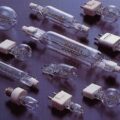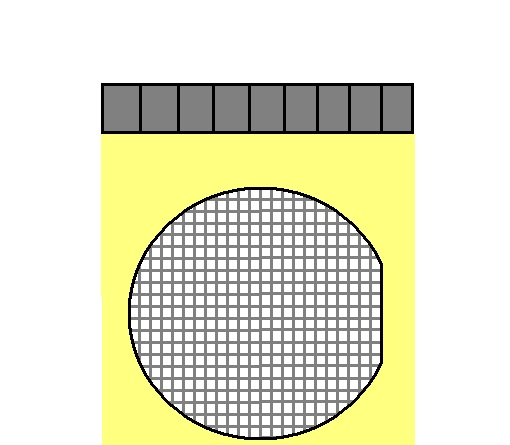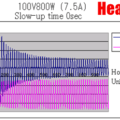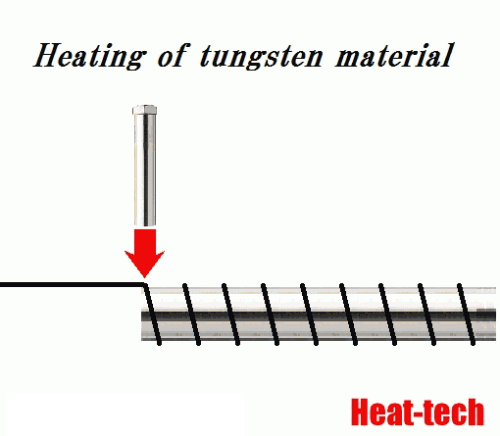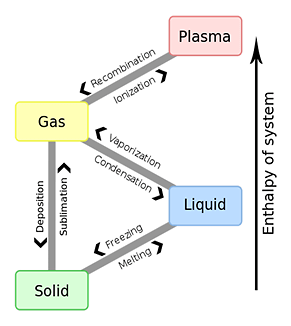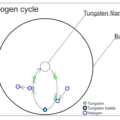INDEX
About heat treatment of tungsten
Tungsten has a melting point of 3422 ℃, which is the highest melting point of metals. From a machining perspective, the ductile-brittle transition temperature is high and low temperature brittleness is seen at room temperature. It is a metal that is difficult to process because the bond strength at the grain boundaries is weak and it is easily cracked from the grain boundaries.
Addition of rhenium (Re) is known to improve the ductility of tungsten at low temperatures, but it is the most expensive substance in metals and is not practical.
Alternatives can be improved by finely dividing the grain structure by powder metallurgy and thermal processing processes. Tungsten extracted from the mine and pulverized is moulded by powder metallurgy. The formed tungsten is crushed and stretched by plastic working such as rolling and drawing to crush and stretch the size and shape of the powder at the time of sintering (isoaxial grain shape), and a large amount of dislocations occur and the size of the crystal grains is small. The shape of the grain also grows in a specific direction.
As a result, it has become possible to reduce the ductile brittle transition temperature to near room temperature by promoting the miniaturization of the thermal grain structure. Plastic working is classified according to the temperature at the time of machining. If the temperature is close to room temperature, it is cold processing, if it is more than half of the melting point, it is hot processing, and if it is less than half, it is warm processing.In hot working, it is difficult to perform uniform machining of thin and thin objects due to the temperature drop during machining, so filament machining is manufactured by cold machining. In cold working, strain remains in the structure, so stress relief annealing is required. Since cold working generates a lot of elastic strain, recrystallization is likely to occur, and recrystallization occurs even temporarily when exposed to high temperature, which promotes intergranular embrittlement in the low temperature region. Recrystallization causes creep deformation of the filament and causes sagging.
About recrystallization
Recrystallization is the formation of new crystal grains that are completely different from the crystal grains generated by processing and that do not contain defects such as dislocations and grow to form a crystal grain structure that is completely different from the processed structure. Is called.
Recrystallization is a process different from recovery, and new crystal grains are generated inside, which are surrounded by large tilt angle grain boundaries that do not contain defects such as cell walls and dislocations, and they grow by eclipsing adjacent crystal grains. To do. As the crystal grains grow and the grain boundaries move at this time, defects such as cell walls and dislocations in the existing crystal grains disappear, so the resistance to the slip motion of dislocations disappears and the matrix softens significantly.
It is said that the place where this new crystal is generated originates from the place where elastic strain is concentrated (inside the grain or grain boundary) in the existing grain structure. In particular, cold-worked materials with a high degree of processing that generate a lot of elastic strain are more likely to generate recrystallization nuclei, and recrystallization starts from 900 to 1000℃. The more recrystallized nuclei are generated, the more recrystallized grains are after growth, and the smaller the recrystallized grain size tends to be. Therefore, if the toughness at low temperature is improved by refining the crystal grains by cold working, recrystallization is likely to occur. Therefore, even temporarily, if exposed to high temperature, recrystallization occurs and grain boundary embrittlement in the low temperature region is promoted. user have to be careful. Filament coils made of pure tungsten line are deformed (creep deformation) by a slight external force such as their own weight due to the slip phenomenon at the grain boundaries extending in the radial direction of the filament when used at high temperature. The deformed filament causes local overheating and is prone to disconnection.
About Dope Tungsten
As a countermeasure, there is a potassium doping method in which potassium (K), silicon (Si), and Aluminium (Al) are added during powder metallurgy. Silicon and Aluminium evaporate during heat treatment, and potassium vaporizes in tungsten to create bubbles. It forms. This bubble stabilizes the microstructure and makes recrystallization less likely. The filament used in halogen lamps is this dope tungsten.
The properties also change depending on the amount of potassium in the additive. If the amount is large, the recrystallization temperature will increase, but the ductility at low temperatures will deteriorate and processing will become difficult. In this way, quality and quantity are important for stabilizing performance and quality.
However, the bubbles due to this dope gradually gather over a long period of time, forming large bubbles inside the filament. This is a factor that limits the lifespan of the lamp, but since the filling gas of the halogen lamp is high pressure, it suppresses the growth and expansion of these bubbles (doped holes). In this respect as well, the high-pressure filled gas is thought to contribute to extending the lifespan of the lamp. In addition, since the impurities in these bubbles will be ejected into the gas filled with the lamp, the halogen balance of the filled gas may be disturbed, which may cause blackening (alkali metals such as potassium are strongly bonded to the halogen. , Inhibits the halogen cycle). This is one of the causes of the blackening that occurs hundreds of hours after the lighting starts.
About plane treatment of tungsten coil
The filament coil may be used as it is without plane treatment, but it is cleaned before it is incorporated into the lamp to remove impurities and prevent oxidation. Finally, hydrogen is used for atmospheric heat treatment.
The cleaning process is generally performed by boiling the tungsten coil in 10% sodium hydroxide aqueous solution (NaOH) for about 10 minutes. If the plane needs to be etched, 5% hydrofluoric acid (HF) treatment is performed, and the plane is corroded with an alkaline aqueous potassium ferricyanide solution. Finally, rinse thoroughly with pure water.
After that, a support (called an anchor or supporter) is attached to the coil filament, and molybdenum foil or an external lead rod is welded. After that, the plane may be treated again with an aqueous solution of sodium hydroxide (NaOH).
Finally, hydrogen is used for atmospheric heat treatment. There is a method of burning hydrogen using dry hydrogen and wet hydrogen.
 HEAT-TECH Best Technology Online Shop
HEAT-TECH Best Technology Online Shop 




